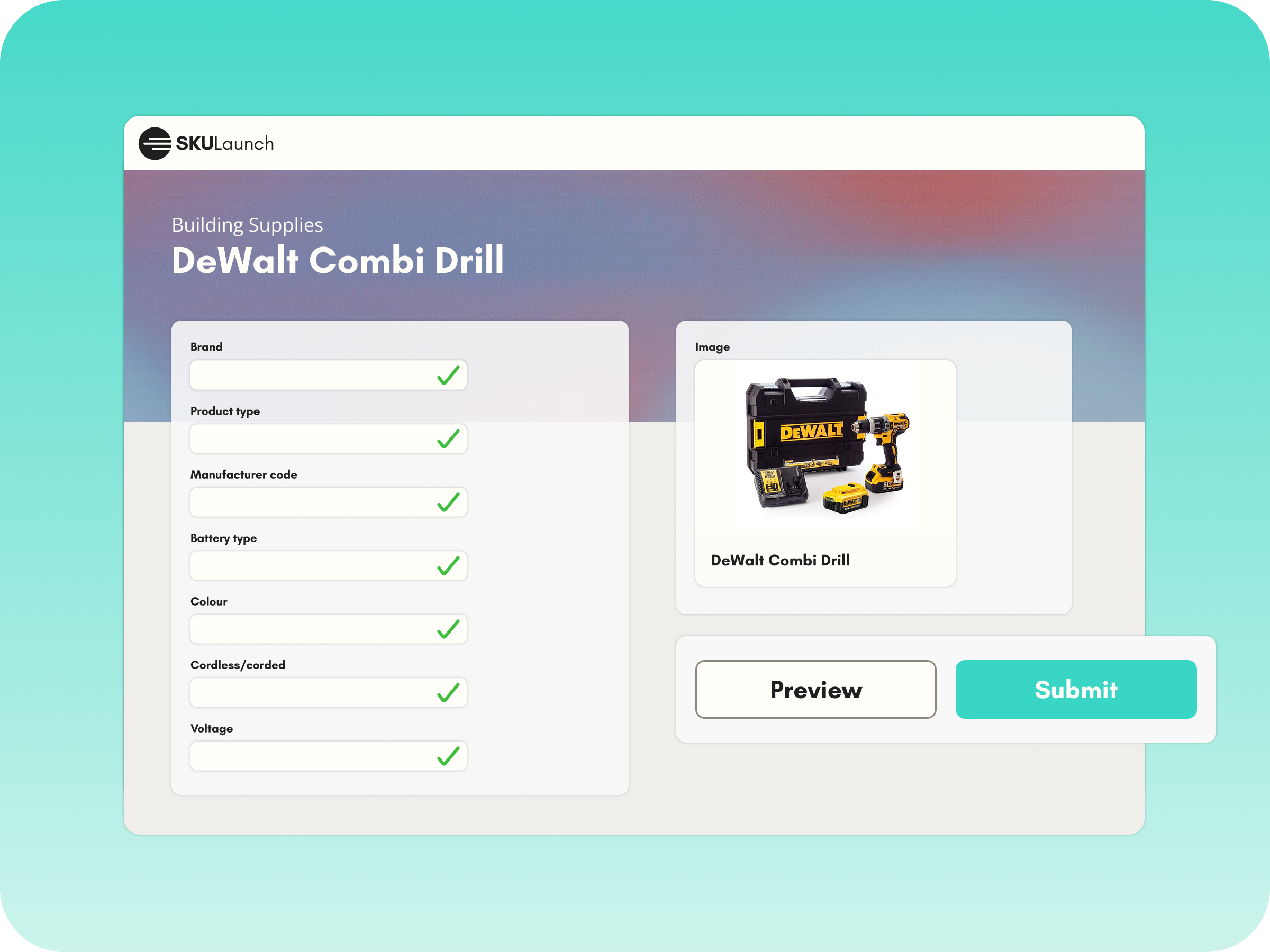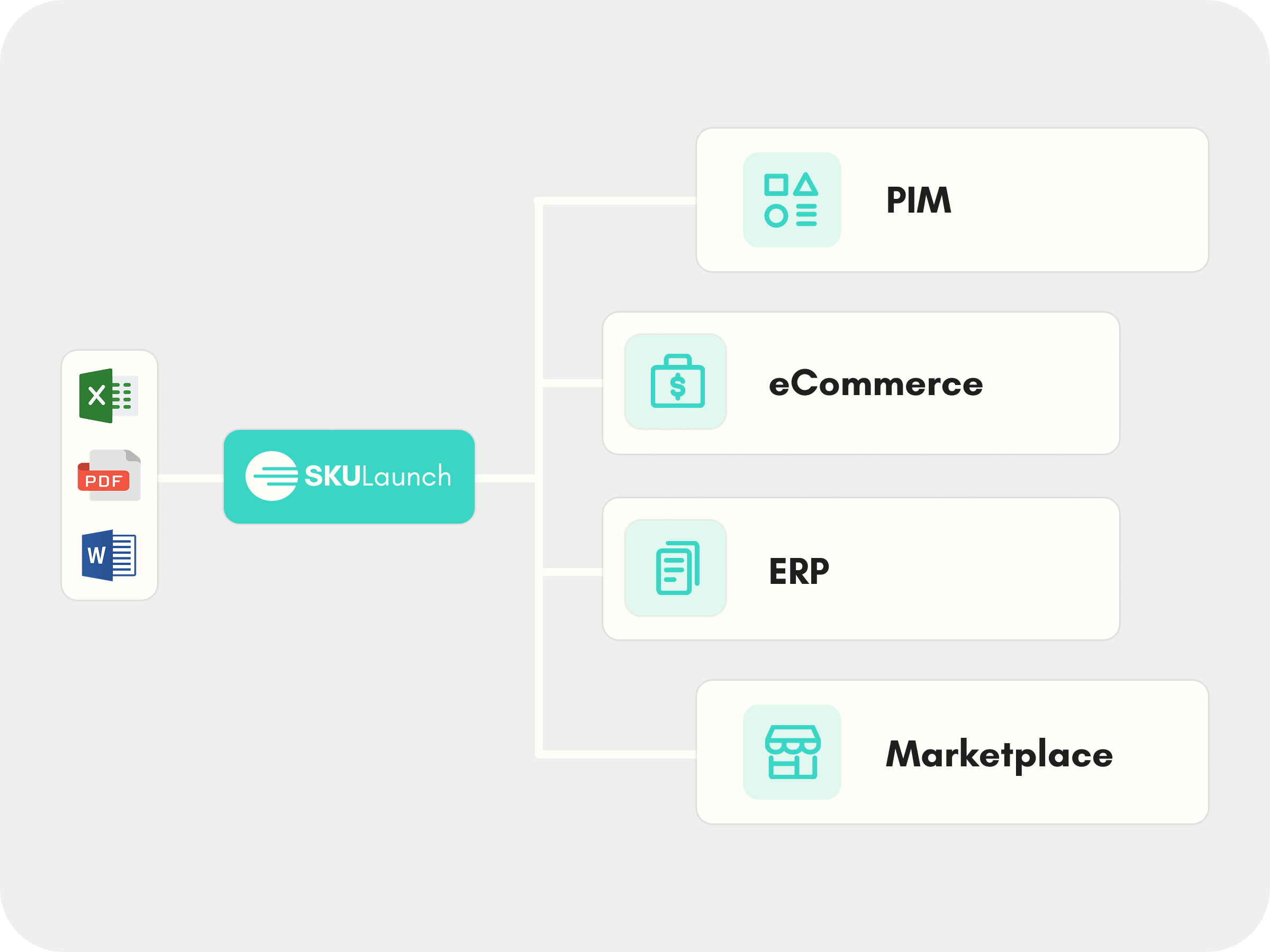Improve Product Data Accuracy Across All Channels
Retailers selling across multiple channels often struggle to keep product data consistent. Attributes vary, categories misalign, and duplicate listings cause confusion. The result? Lost visibility, compliance issues, and frustrated customers.
Inconsistent product data reduces discoverability, creates operational errors, and damages customer trust. To succeed in omnichannel retail, accuracy and alignment across systems isn’t optional—it’s essential.
Typical Challenges
Inconsistent Attribute Formatting
Product fields like sizes, specs, or colors may be labeled or formatted differently across channels—confusing customers and harming search visibility.
Misaligned Categories or Taxonomies
Product data may map incorrectly to category trees, hurting discoverability and marketplace compliance.
Duplicate or Conflicting Listings
Multiple versions of the same SKU can cause confusion, inventory issues, and SEO cannibalization.
How SKULaunch solves these challenges
At SKULaunch, we understand exactly what pain points businesses have while onboarding and validating supplier product data. That’s why we developed our AI-powered product data onboarding platform – precisely to address the three key challenges we’ve discussed.
Unifying product attributes across systems
Standardises product fields, units, and terminology across PIM, ecommerce, and marketplace platforms.
Accurate Category Mapping
AI-powered classification ensures every SKU is placed in the correct taxonomy.
Avoiding duplication errors
Identifies and consolidates duplicates before they reach your systems.
SKUConcierge helps businesses that need expert intervention or full-service product data cleanup.
How we maintain consistency everywhere
This is what our process looks like when syncing accurate, standardized data across every sales and commerce platform you use:

1
Step 1: Centralize Supplier Data
Import all incoming data into SKULaunch for unified processing.
- Accepts multiple file types
- API feeds or manual uploads
- Live data review interface
Step 2: Validate and Standardize
2
Run AI-driven validation to align fields, naming, and formatting.
- Attribute alignment
- Duplicate detection
Channel-specific formatting
- Attribute alignment
2



Step 3: Push to All Channels
3
Once verified, data flows directly to all platforms.
- ERP, PIM, ecommerce, marketplace support
- Syncs in real-time
- Error logs for audit
What you can expect
- Consistent listings on every platform
- Higher product discoverability and SEO
- Fewer returns and complaints
- Better marketplace compliance
